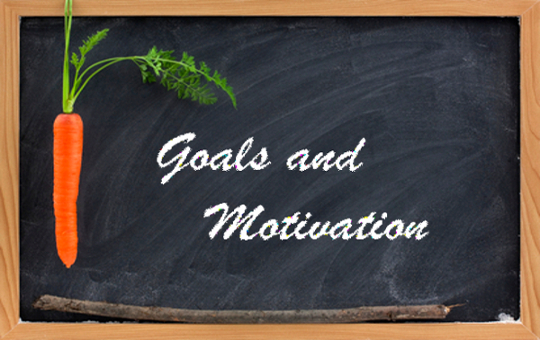Human beings achieve success by setting and reaching goals. The process of setting and achieving goals includes trial, error, elimination and execution. In other words, goal setting and motivation are inherent processes necessary to achieve success. Since the days of the hunter-gatherer, goal setting (or planning) was what separated those who ate from those that went hungry. Even today it can still work this way. Those who are incapable of setting and reaching goals are more likely to become underachievers. Underachievers find it harder to obtain gainful employment and maintain meaningful relationships, while life is much easier for those who achieve goals.
Motivation as it Relates to Goal Setting Theory
So what holds an individual back from setting and/or achieving goals, if he or she knows the consequences of foregoing them? One of the major factors can be a lack of motivation. Motivation is the drive that prompts an individual to ‘do’ and not procrastinate. Behaviorist Clark Hull compared a human being’s need to reduce stress with the body’s need to remain balanced in his Drive-Reduction Theory. He outlined the fact that at a primal level the body and mind work to actively maintain balance. For example, if the the appestat, which controls hunger, is invoked drive and motivation to find food goes up. Hull found at a very basic level most of us are inherently motivated to reduce stress in the hopes of bringing ourselves back into balance.
Therefore human beings need to possess some “drive” to prevent unnecessary tension with basic needs like sex and hunger. However Mr. Hull’s work doesn’t cover why some of us are driven to engage in activity outside of tending to our basic needs. Dr. Edwin Locke and Gary Latham later studied the subject of motivation as it pertains to goal setting. They discovered five key elements that are necessary for success. These include: clarity, challenge, commitment, feedback and task complexity. They believed that motivation is gained through setting challenging goals. If the goals is too simple or easy to reach, the motivation needed to achieve the goal simply wouldn’t exist. A challenging (but reachable) goal, as they saw it, leads to an increase in energy and effort, both of which were needed to complete a goal. Locke and Latham concluded that this methodology is vital to reach measurable performance and progress.
In reviewing these theories, you gain a better understanding of how the overall process of motivation works. One needs drive to set goals and one needs goals to increase motivation. The paradox here is that one theoretically cannot exist without the other. If a person lacks motivation, there is no drive to set goals. On the other hand, if one lacks goals, he or she will not feel motivated to aim for greater achievement, leading to unchanging behavior.
The key to achieving then is to pick challenging goals, that are aligned well with a personal sense of purpose and have a clear finish line. This will ensure drive, which creates and fosters motivation and — voilà — the process of setting or reaching the goal is put into motion. Thanks to the works of great theorists like Clark Hull, Edwin Locke and Gary Latham people, coaches, and companies now have a better basic understanding of how to create realistic, obtainable and measurable goals. The same principles that apply to business goal setting can be applied to personal goals as well. Get the motivation right and almost anything becomes possible.
Who is your favorite motivational and/or goal theorist? Please let us know in the comments section below.
